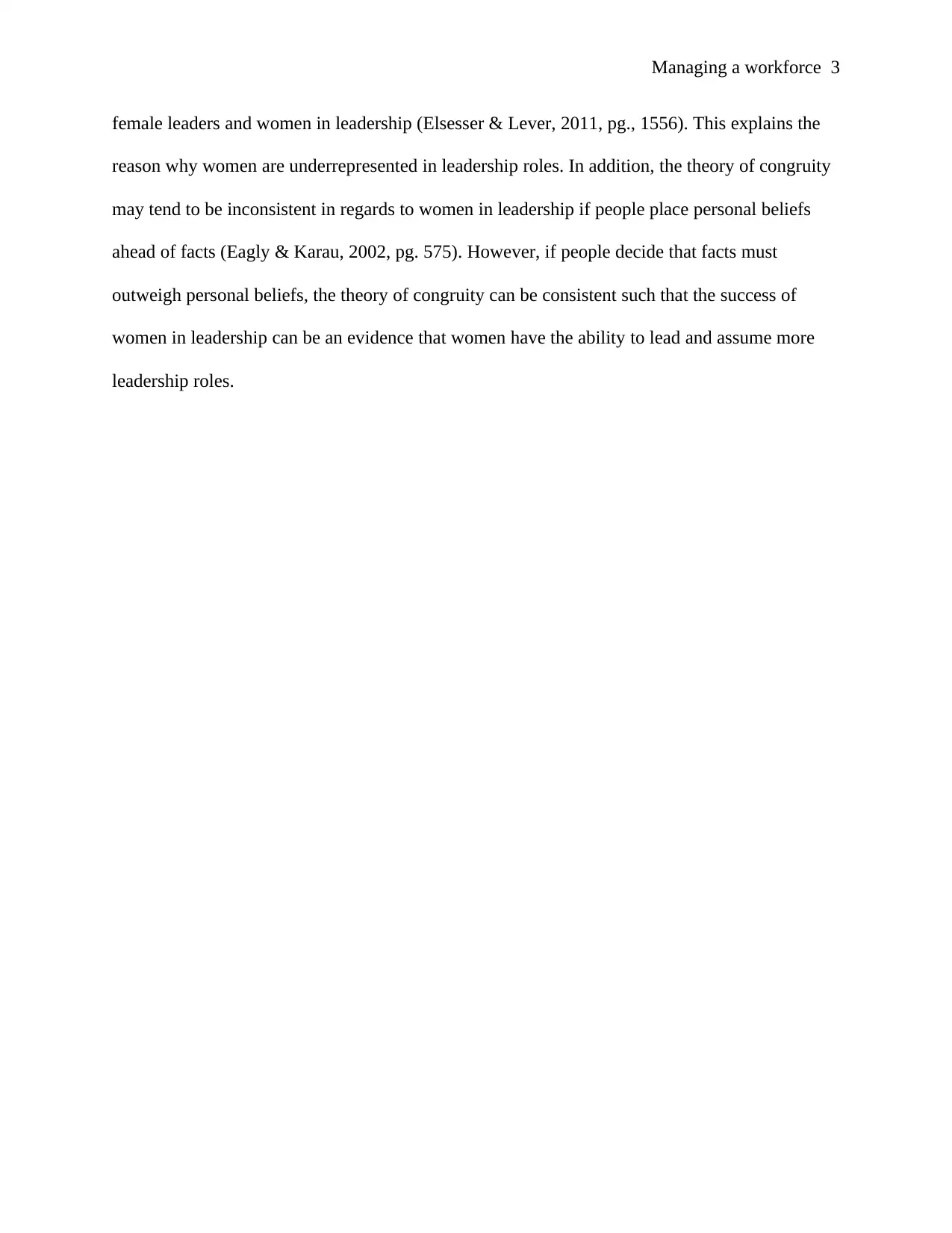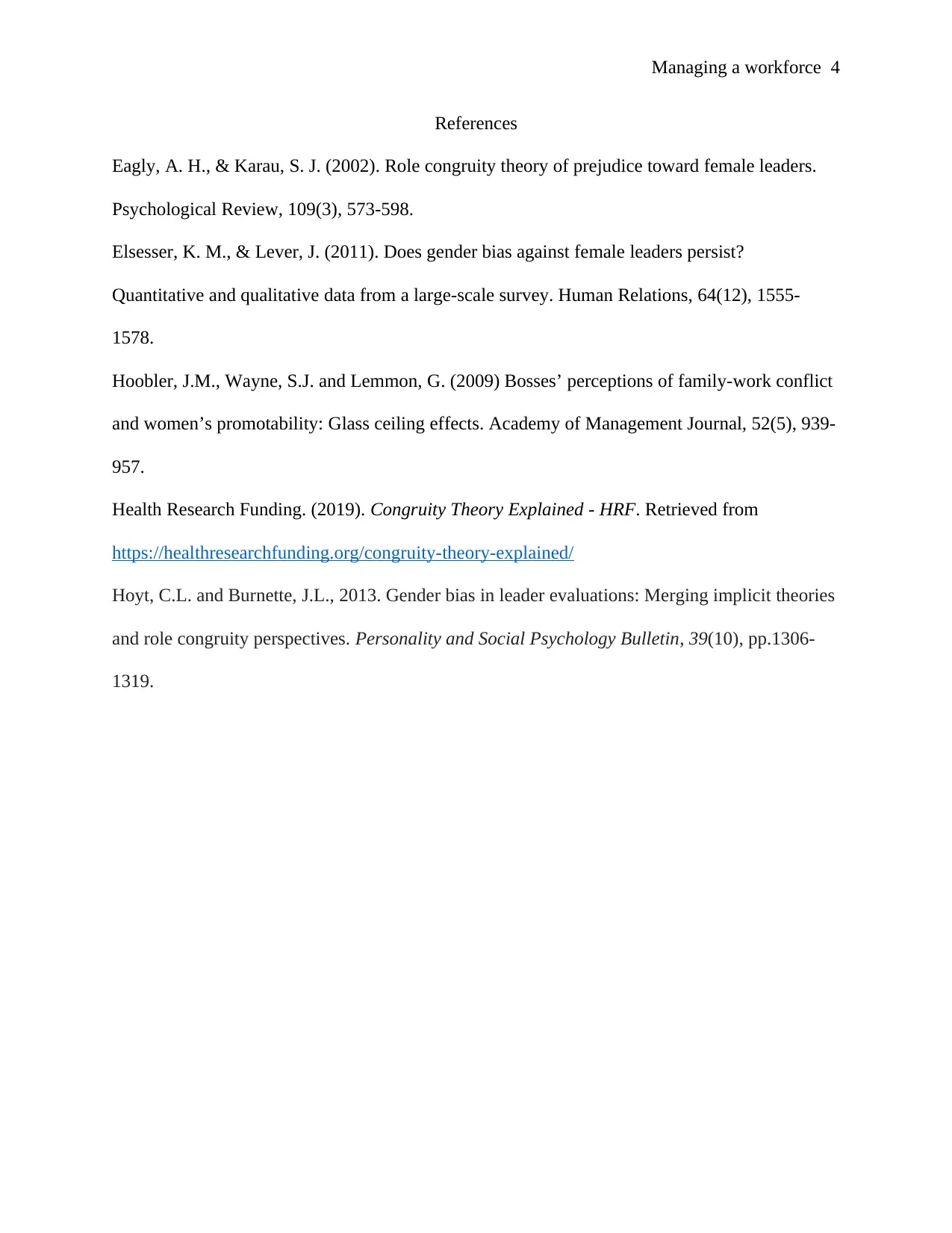Essay on Leadership and Workforce: Congruity Theory Analysis
VerifiedAdded on 2023/01/19
|4
|685
|53
Essay
AI Summary
This essay delves into the application of the congruity theory in workforce management, particularly focusing on the dynamics of gender roles and leadership. It explores how societal perceptions and stereotypes influence attitudes toward female leaders, often leading to prejudice due to the perceived incongruity between female gender stereotypes and leadership characteristics. The essay examines the impact of these biases, highlighting the association of men with agentic qualities deemed ideal for leaders and women with communal features. It further discusses how the theory can be applied to address the underrepresentation of women in leadership roles, emphasizing the need to prioritize facts over personal beliefs to foster a more equitable view of women's leadership capabilities. The essay references several studies to support its arguments, offering a comprehensive analysis of the challenges and biases women face in leadership positions within the context of the congruity theory.
1 out of 4





![[object Object]](/_next/static/media/star-bottom.7253800d.svg)